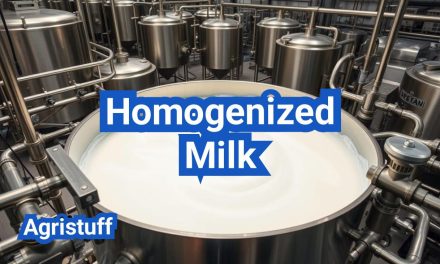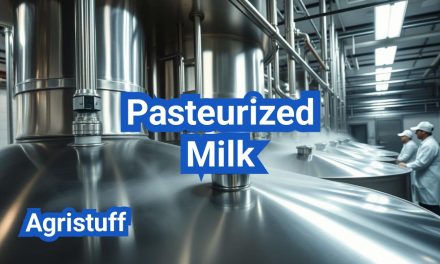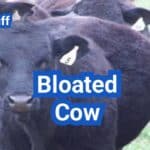The United States dairy market is a significant sector, with an estimated size of $111.6 billion in 2025. The industry encompasses a wide range of products, from milk and cheese to yogurt and ice cream.
The U.S. dairy industry is characterized by its diverse product offerings and evolving consumer trends. As consumer preferences shift towards healthier and more sustainable options, the industry is adapting to meet these demands.
Key Takeaways
- The U.S. dairy market is projected to reach $111.6 billion by 2025.
- The industry offers a diverse range of products, including milk, cheese, and yogurt.
- Consumer trends are driving demand for healthier and more sustainable dairy products.
- The industry is evolving to meet changing consumer preferences.
- The U.S. dairy market is a significant contributor to the country’s economy.
The U.S. Dairy Industry: A Comprehensive Overview
With its rich history and diverse operations, the dairy industry in the U.S. stands as a pivotal sector within the agricultural economy. The industry encompasses a broad spectrum of activities, from farming to distribution, and plays a crucial role in the country’s economic landscape.
Understanding Dairy’s Economic Impact
The dairy industry is a significant contributor to the U.S. economy, providing employment opportunities and generating substantial revenue. It supports a wide range of businesses, from small dairy farms to large processing facilities, and contributes to the overall economic stability of rural areas.
Economic contributions of the dairy industry include job creation, income generation for farmers and processors, and tax revenues for local and national governments. The industry’s economic impact is felt across various sectors, including agriculture, manufacturing, and retail.
Key Players and Market Structure
The U.S. dairy industry is characterized by a diverse market structure, with various players operating at different levels. Major dairy companies such as Dairy Farmers of America and Land O’Lakes are prominent players, alongside numerous smaller, independent dairy farms and processors.
The market structure is influenced by factors such as production costs, consumer demand, and regulatory environments. Understanding these dynamics is crucial for stakeholders to navigate the industry effectively.
Regional Production Hubs Across America
Dairy production in the U.S. is not evenly distributed; certain regions are more conducive to dairy farming due to factors like climate, feed availability, and infrastructure. States like Wisconsin, California, and New York are among the top dairy-producing states, each with its unique advantages and challenges.
These regional production hubs play a vital role in the national dairy supply, with their production levels and practices influencing the overall industry.
How to Navigate the U.S. Dairy Market

To successfully navigate the U.S. dairy market, one must analyze its various components and trends. The dairy industry is a significant sector in the U.S. economy, with a complex supply chain and diverse product offerings.
Analyzing Current Market Size and Valuation
The U.S. dairy market is substantial, with a valuation that reflects its importance in the food industry. As of the latest data, the market is expected to grow at a CAGR of 3.57% during the forecast period (2025-2030). This growth is driven by increasing demand for dairy products and innovations in production and processing.
Identifying Growth Sectors (2023-2028)
Several sectors within the dairy market are poised for growth, driven by consumer preferences and technological advancements. Key growth areas include:
- Organic and specialty dairy products
- Lactose-free and other value-added dairy products
- Plant-based dairy alternatives
These sectors are expected to drive the market’s expansion, catering to diverse consumer needs.
Recognizing Factors Driving Market Changes
Various factors influence the U.S. dairy market, including consumer trends, regulatory changes, and economic conditions. Understanding these factors is crucial for stakeholders to make informed decisions.
| Factor | Description | Impact |
|---|---|---|
| Consumer Trends | Shift towards healthier and sustainable options | Increased demand for organic and plant-based dairy |
| Regulatory Changes | Updates in food safety and labeling regulations | Compliance costs and potential market shifts |
| Economic Conditions | Fluctuations in feed prices and dairy commodity markets | Impact on production costs and pricing strategies |
By understanding these dynamics, stakeholders can better navigate the complexities of the U.S. dairy market.
Understanding the Dairy Supply Chain
Understanding the dairy supply chain is crucial for ensuring the quality and safety of dairy products. The dairy supply chain involves several critical steps from farm to table, ensuring that milk and dairy products reach consumers in a safe and nutritious state.
Tracing Dairy’s Journey from Farm to Table
The journey of dairy products begins on the farm, where milk is produced. From there, it is transported to processing facilities where it undergoes various treatments such as pasteurization and homogenization. After processing, the dairy products are packaged and distributed through various channels to retailers and eventually to consumers.
Identifying Critical Cold Chain Requirements
Maintaining a cold chain is essential for dairy products to prevent spoilage and ensure safety. This involves keeping the products at a consistent refrigerated temperature from the processing stage through distribution to storage at retail outlets. Key components of cold chain management include:
- Refrigerated transportation
- Temperature-controlled storage facilities
- Monitoring and tracking systems
Exploring Major Distribution Channels
Dairy products are distributed through various channels, including:
- Direct store deliveries
- Warehouse distribution centers
- Online retail platforms
Each of these channels has its advantages and challenges, particularly in maintaining the cold chain and ensuring product quality.
How to Identify Different Dairy Processing Methods

Dairy processing involves several key methods that affect the final product’s taste, nutritional value, and shelf life. Understanding these processes can help consumers make informed decisions about the dairy products they choose.
Distinguishing Pasteurization Techniques
Pasteurization is a critical step in dairy processing that involves heating milk to kill harmful bacteria. There are different pasteurization techniques, including High Temperature, Short Time (HTST) and Ultra-Pasteurization (UP). HTST involves heating milk to 161°F for at least 15 seconds, while UP heats milk to 280°F for a minimum of 2 seconds.
The choice of pasteurization technique can impact the milk’s flavor and nutritional content. For instance, UP can extend the shelf life of milk, making it a popular choice for products that need to stay fresh for longer periods.
Recognizing Homogenized vs. Non-Homogenized Products
Homogenization is another important dairy processing method that involves forcing milk through a small opening to break down fat molecules, ensuring they are evenly distributed. This process prevents cream from separating and gives milk a uniform texture.
Non-homogenized milk, on the other hand, allows the cream to rise to the top, which some consumers prefer for its natural separation. Understanding whether a product is homogenized or not can help consumers choose based on their preferences.
Understanding UHT and ESL Processing Benefits
Ultra-High Temperature (UHT) and Extended Shelf Life (ESL) processing are techniques used to extend the shelf life of dairy products. UHT involves heating milk to a very high temperature (usually around 280°F) for a short period, followed by rapid cooling. ESL processing heats milk to a lower temperature than UHT but for a longer duration.
Both methods significantly reduce bacterial counts, allowing products to be stored without refrigeration until opened. This makes them ideal for distribution to areas with limited refrigeration.
Evaluating Raw Milk Safety Considerations
Raw milk, which is not pasteurized, has been a topic of debate due to its potential health risks. While some consumers prefer raw milk for its perceived health benefits, it can contain harmful bacteria like Salmonella and E. coli.
Consumers considering raw milk should be aware of the risks and ensure it comes from a reputable source that follows strict safety guidelines.
| Processing Method | Description | Benefits |
|---|---|---|
| Pasteurization | Heating milk to kill bacteria | Ensures safety, extends shelf life |
| Homogenization | Breaking down fat molecules for even distribution | Uniform texture, prevents cream separation |
| UHT/ESL | High heat treatment for extended shelf life | Longer shelf life, reduced need for refrigeration |
Guide to Selecting Dairy Products
With the vast array of dairy products available in the U.S. market, making informed choices can be a daunting task for consumers. The diverse range of products, from milk and cheese to yogurt and butter, caters to different tastes and dietary needs.
Choosing Between Milk Varieties
Milk comes in various forms, including whole, low-fat, skim, and flavored options. Consumers should consider their dietary needs and preferences when selecting a milk type. For instance, those watching their calorie intake might prefer skim milk, while others might enjoy the richer taste of whole milk.
Additionally, the rise of alternative milks, such as almond and soy milk, offers consumers more choices. However, it’s essential to check the nutritional content to ensure it meets dietary requirements.
Selecting Cheeses by Type and Use
Cheese is a versatile dairy product with numerous types, each suited for different culinary uses. For example, mozzarella is ideal for pizzas, while cheddar is often used in sandwiches and baked dishes. Understanding the characteristics of various cheeses can help consumers make the right choice for their needs.
Soft cheeses like brie and feta are perfect for spreads and salads, whereas harder cheeses like parmesan are great for grating over pasta dishes.
Picking the Right Yogurt and Cultured Products
Yogurt and other cultured products have gained popularity due to their health benefits. When choosing yogurt, consumers should look for products with live cultures and consider the sugar content. Greek yogurt, for instance, is high in protein and can be a satisfying snack.
Cultured products like kefir offer additional probiotic benefits, supporting gut health. It’s crucial to check the labels for added sugars and artificial flavorings.
Choosing Quality Butter and Cream
Butter and cream are essential in many recipes and can significantly impact flavor. When selecting butter, consumers should consider the fat content and whether it’s salted or unsalted. European-style butters, for example, have a higher fat content and can add richness to baked goods.
Cream, available in heavy, whipping, and half-and-half forms, is used in various desserts and sauces. Choosing high-quality cream can elevate the taste and texture of dishes.
How to Evaluate Dairy Nutrition

Understanding the nutritional value of dairy products is crucial for making informed dietary choices. Dairy products are rich in essential nutrients, making them a vital part of a balanced diet.
Assessing Essential Nutrients in Milk Products
Dairy products are an excellent source of calcium, vitamins, and proteins. These nutrients are vital for bone health, muscle function, and overall well-being. When evaluating dairy nutrition, it’s essential to consider the variety of nutrients present in different products.
- Milk is a rich source of calcium and vitamins D and B12.
- Cheese provides protein and calcium, though its fat content can vary.
- Yogurt contains probiotics, which support gut health.
Comparing Protein Content Across Dairy Types
The protein content in dairy products varies significantly. For instance, Greek yogurt has a higher protein content compared to regular yogurt. Understanding these differences helps consumers choose products that meet their protein needs.
Understanding Fat Composition and Health Implications
The fat composition in dairy products has important health implications. Full-fat dairy products contain saturated fats, which may impact heart health. In contrast, low-fat or fat-free options can be beneficial for those monitoring their fat intake.
Maximizing Calcium and Vitamin Benefits
To maximize the benefits of calcium and vitamins from dairy products, consumers should consider the following:
- Choose fortified dairy products for enhanced vitamin D content.
- Opt for a variety of dairy products to ensure a broad nutrient intake.
- Be mindful of the calcium content in different dairy products.
By evaluating dairy nutrition and making informed choices, consumers can enjoy the health benefits of dairy products while maintaining a balanced diet.
Choosing Between Full-Fat and Low-Fat Dairy Options

The choice between full-fat and low-fat dairy products depends on various factors, including nutritional needs, health goals, and personal preferences. Understanding the differences between these two types of dairy products is crucial for making informed decisions.
Analyzing Nutritional Differences
Full-fat dairy products contain more calories and saturated fats compared to their low-fat counterparts. However, they also provide a feeling of fullness and satisfaction, which can be beneficial for weight management. On the other hand, low-fat dairy products are lower in calories and saturated fats, making them a popular choice for those looking to reduce their fat intake.
Nutritional Comparison: When comparing full-fat and low-fat dairy, it’s essential to consider the nutrient profile. Full-fat dairy tends to have higher levels of fat-soluble vitamins like vitamins A, D, E, and K. In contrast, low-fat dairy products often have lower calorie counts but may contain added sugars or artificial flavorings to enhance taste.
Selecting Milk for Weight Management Goals
For individuals focusing on weight management, the choice between full-fat and low-fat dairy can significantly impact their progress. Full-fat dairy can be more satiating, potentially leading to reduced overall calorie intake. However, it’s crucial to balance this with the higher calorie content of full-fat dairy.
On the other hand, low-fat dairy products are generally lower in calories, which can be beneficial for those on a calorie-restricted diet. It’s essential to choose low-fat options that are not high in added sugars or artificial ingredients.
Determining When Full-Fat Products Are Beneficial
There are specific scenarios where full-fat dairy products are beneficial. For instance, athletes or individuals with high energy needs may benefit from the additional calories in full-fat dairy. Additionally, full-fat dairy can be more satisfying, potentially aiding in weight management by reducing the likelihood of overeating.
It’s also worth noting that some research suggests that the saturated fats in full-fat dairy may not be as harmful as once thought, and they may even have health benefits when consumed in moderation.
How to Understand Dairy Regulations and Labels

Understanding dairy regulations is crucial for consumers, manufacturers, and distributors alike. The dairy industry is subject to various regulations that ensure product safety, quality, and accurate labeling.
Decoding FDA Standards on Packaging
The FDA sets strict standards for dairy product packaging. This includes requirements for labeling, packaging materials, and storage conditions. For instance, dairy products must be labeled with their name, ingredients, nutritional information, and handling instructions.
Key FDA labeling requirements include:
- Nutrition Facts panel
- Ingredient list
- Allergen warnings
- Handling and storage instructions
Interpreting Pasteurized Milk Ordinance Requirements
The Pasteurized Milk Ordinance (PMO) is a critical regulation that governs the production, processing, and distribution of milk and milk products. It ensures that milk is safely pasteurized and handled to prevent the spread of diseases.
“The PMO sets the standard for the safe handling of milk, from farm to table.” – FDA
Recognizing FSMA Compliance Indicators
The Food Safety Modernization Act (FSMA) is a comprehensive food safety law that includes regulations for dairy products. FSMA compliance indicators include proper record-keeping, hazard analysis, and preventive controls.
| FSMA Compliance Area | Description |
|---|---|
| Record-keeping | Maintaining accurate records of production, processing, and distribution |
| Hazard Analysis | Identifying potential hazards in the production process |
| Preventive Controls | Implementing controls to mitigate identified hazards |
Understanding Cheese and Yogurt Standard Identities
The FDA has established standard identities for various dairy products, including cheese and yogurt. These standards define the characteristics, composition, and labeling requirements for these products.
By understanding these regulations and labeling requirements, consumers and industry professionals can make informed decisions about dairy products.
Exploring Specialty and Alternative Dairy Products
As consumer preferences shift, the demand for specialty and alternative dairy products is on the rise. This trend is driven by consumers seeking unique options that cater to specific dietary needs or preferences.
Finding Quality Lactose-Free Options
Lactose-free dairy products are becoming increasingly popular among those with lactose intolerance. These products are made by adding lactase, the enzyme that breaks down lactose, to the milk. When selecting lactose-free options, look for products that are certified by reputable organizations to ensure quality.
Key benefits of lactose-free dairy:
- Reduced symptoms of lactose intolerance
- Comparable nutritional profile to regular dairy
- Increased accessibility for those with dietary restrictions
Selecting A2 Milk and Specialty Cow Milks
A2 milk is another alternative gaining traction, particularly among those who experience discomfort after consuming traditional milk. A2 milk comes from cows that produce only the A2 type of beta-casein protein, unlike regular milk which contains both A1 and A2 proteins.
Considerations for A2 milk:
- Potential reduction in digestive discomfort
- Higher production costs, reflected in the price
- Limited availability compared to traditional milk
Trying Goat, Sheep, and Buffalo Milk Products
Goat, sheep, and buffalo milk products offer distinct nutritional profiles and flavors. For instance, goat milk is often easier to digest than cow milk, while sheep milk is rich in nutrients and often used in cheese production.
Nutritional highlights:
| Milk Type | Protein Content | Calcium Content |
|---|---|---|
| Goat Milk | Higher | Comparable to cow milk |
| Sheep Milk | Rich | Higher than cow milk |
Comparing Plant-Based Alternatives to Traditional Dairy
Plant-based alternatives, made from sources like almonds, soy, and oats, are increasingly popular. While they can offer a similar taste and texture to dairy, their nutritional profiles can vary significantly.
Key considerations:
- Fortification with calcium and vitamins
- Protein content and source
- Environmental impact of production
Top 10 Dairy Products Worth Trying

From rich milks to artisanal cheeses, the U.S. dairy market is teeming with exciting products that cater to diverse tastes and preferences. Exploring these top dairy products can elevate your culinary experiences and introduce you to new flavors.
Must-Try Milk and Cream Products
Milk and cream are staples in many dairy products. Some must-try options include:
- Whole milk for its rich, creamy texture
- Flavored milks like chocolate or strawberry for a twist
- Heavy cream for whipping or cooking
- Cultured cream for its tangy flavor
Outstanding American Cheese Varieties
The U.S. is home to a diverse range of artisanal cheeses. Some standout varieties include:
- Cheddar for its sharpness and versatility
- Mozzarella for pizza and caprese salads
- Feta for its salty, crumbly texture
- Gouda for its smooth, nutty flavor
Premium Yogurts and Cultured Dairy
Yogurt and other cultured dairy products offer a blend of taste and nutrition. Consider trying:
- Greek yogurt for its high protein content
- Icelandic yogurt (Skyr) for its thick texture
- Kefir for its probiotic benefits
- Cultured buttermilk for its tangy flavor in recipes
Artisanal and Specialty Dairy Discoveries
Beyond the basics, there are numerous artisanal and specialty dairy products worth exploring. Some examples include:
- Goat cheese for its creamy texture and mild flavor
- Sheep’s milk products for their rich, nutty taste
- Buffalo mozzarella for its authentic pizza experience
- Lactose-free products for those with dietary restrictions
To help you navigate these options, here’s a comparison of some popular dairy products:
| Product | Taste | Nutritional Highlights |
|---|---|---|
| Whole Milk | Rich, creamy | High in calcium and vitamins |
| Greek Yogurt | Tangy, thick | High in protein, probiotics |
| Cheddar Cheese | Sharp, versatile | Good source of protein, calcium |
| Heavy Cream | Rich, creamy | High in fat, calories |
Exploring these top dairy products can enhance your culinary repertoire and provide a deeper appreciation for the diversity of dairy offerings in the U.S. market.
How to Support Sustainable Dairy Practices

Consumers have the power to drive change in the dairy industry by making informed, sustainable choices. As the demand for environmentally friendly products grows, dairy companies are adapting to meet these new expectations.
Identifying Environmentally Conscious Dairy Brands
One way to support sustainable dairy is by choosing brands that prioritize environmental stewardship. Look for companies that have made commitments to reduce their carbon footprint, such as using renewable energy sources or implementing water conservation measures. Certifications like “Certified Sustainable Dairy” or participation in programs like the Dairy Sustainability Framework can be indicators of a brand’s dedication to sustainability.
Understanding EPA Agriculture Emissions Standards
The Environmental Protection Agency (EPA) plays a crucial role in regulating emissions from agricultural practices, including dairy farming. Familiarizing yourself with the EPA’s Agriculture Emissions Standards can help you understand the regulatory framework that dairy farms operate within. This knowledge can guide your purchasing decisions and support farms that adhere to or exceed these standards.
Recognizing Sustainable Packaging Innovations
Sustainable packaging is another critical aspect of the dairy industry’s environmental impact. Companies are innovating with materials and designs that reduce waste and increase recyclability. When shopping, look for dairy products with minimal or biodegradable packaging, and support companies that are pioneering these efforts.
Supporting Industry Sustainability Initiatives
Beyond individual product choices, consumers can also support broader industry initiatives aimed at improving sustainability. This can include programs focused on improving manure management, reducing greenhouse gas emissions, or promoting sustainable grazing practices. By backing these initiatives, consumers can contribute to a more sustainable dairy industry as a whole.
By making informed choices and supporting sustainable practices, consumers can help drive the dairy industry towards a more environmentally friendly future.
Following U.S. Dairy Consumption Trends

The U.S. dairy market is witnessing a significant shift in consumer preferences, driven by changing lifestyles, dietary needs, and environmental concerns. This transformation is reshaping the dairy industry, influencing production, marketing, and distribution strategies.
Tracking Changing Consumer Preferences
Consumers are increasingly seeking dairy products that align with their health and wellness goals. There’s a growing demand for products high in protein, low in sugar, and rich in nutrients. Additionally, consumers are becoming more environmentally conscious, driving the demand for sustainable dairy practices.
Discovering Premium and Artisanal Products
The market for premium and artisanal dairy products is expanding, driven by consumers’ willingness to pay more for high-quality, unique products. Artisanal cheeses, specialty yogurts, and gourmet ice creams are gaining popularity, offering consumers a taste experience that mass-produced products cannot match.
Exploring Functional and Fortified Dairy
Functional and fortified dairy products are on the rise, as consumers look for products that offer additional health benefits. Probiotic yogurts, vitamin-enriched milks, and dairy products fortified with omega-3 fatty acids are examples of this trend, catering to the growing demand for healthier options.
Understanding Import and Export Dynamics
The U.S. dairy industry is also influenced by international trade. Imports and exports play a crucial role in the market, with the U.S. exporting significant quantities of dairy products like cheese and whey, while importing specialty cheeses and other dairy products. Understanding these dynamics is essential for grasping the overall trends in U.S. dairy consumption.
How to Incorporate Dairy into Special Diets

Dairy can be a valuable component of various special diets when chosen correctly. It provides essential nutrients like calcium, protein, and vitamins that are crucial for overall health.
Adapting Dairy for Weight Management Plans
For those on weight management plans, dairy can be a helpful ally. Choosing low-fat or fat-free dairy products can reduce calorie intake while maintaining nutrient consumption. Low-fat yogurt and milk are excellent options for those looking to manage their weight.
Finding Dairy Options for Lactose Sensitivity
Individuals with lactose sensitivity can still enjoy dairy by opting for lactose-free products or those with lower lactose levels, such as hard cheeses and lactose-free milk. These options allow for dairy consumption without the discomfort.
Balancing Dairy in Low-Carb and Keto Diets
For those on low-carb or keto diets, dairy can be incorporated by focusing on high-fat, low-carb products like full-fat cheese and heavy cream. It’s essential to monitor portion sizes to maintain the diet’s integrity.
Incorporating Dairy for Optimal Nutrition
Dairy is a rich source of essential nutrients. Incorporating a variety of dairy products into one’s diet can ensure optimal nutrition. A balanced intake of milk, cheese, and yogurt can provide the necessary nutrients for good health.
| Dairy Product | Nutritional Benefit | Special Diet Suitability |
|---|---|---|
| Low-Fat Yogurt | High in Protein, Calcium | Weight Management |
| Lactose-Free Milk | Rich in Vitamins, Calcium | Lactose Sensitivity |
| Full-Fat Cheese | High in Fat, Protein | Low-Carb, Keto Diets |
Embracing the Future of Dairy in America
The future of dairy in America is poised for significant growth, driven by evolving consumer preferences and emerging trends. As the dairy industry continues to adapt to changing demands, understanding the dairy trends and dairy industry outlook becomes crucial for stakeholders.
With a focus on sustainability, innovation, and quality, the U.S. dairy industry is expected to thrive. Consumers are increasingly seeking premium and artisanal dairy products, driving the demand for high-quality milk and dairy derivatives. The dairy industry outlook remains positive, with opportunities for growth in both domestic and international markets.
As the industry moves forward, embracing new technologies, sustainable practices, and shifting consumer preferences will be key to success. By understanding the future of dairy and its trends, businesses and consumers alike can make informed decisions that support a thriving dairy industry in America.
FAQ
What is the current state of the U.S. dairy industry?
The U.S. dairy industry is a significant sector in the country’s economy, with a diverse range of products and a complex supply chain. The industry is driven by consumer demand for dairy products, including milk, cheese, yogurt, and butter.
What are the key factors driving changes in the U.S. dairy market?
The U.S. dairy market is influenced by various factors, including consumer preferences, technological advancements, and regulatory changes. Shifts in consumer demand towards premium and artisanal products, as well as growing interest in sustainable and environmentally conscious dairy practices, are driving market changes.
How is dairy processed, and what are the different methods used?
Dairy processing involves various techniques, including pasteurization, homogenization, UHT, and ESL processing. These methods ensure the safety and quality of dairy products, while also extending shelf life and improving nutritional content.
What are the benefits of choosing full-fat versus low-fat dairy products?
Full-fat dairy products contain higher levels of saturated fats, which may be beneficial for certain nutritional needs, while low-fat options are often preferred for weight management and reduced calorie intake. The choice between full-fat and low-fat dairy depends on individual health goals and nutritional requirements.
How can consumers identify environmentally conscious dairy brands?
Consumers can look for dairy brands that prioritize sustainability, such as those using eco-friendly packaging, reducing waste, and implementing environmentally friendly farming practices. Certifications like “Certified Sustainable” or “Animal Welfare Approved” can also indicate a brand’s commitment to sustainability.
What are some specialty dairy products worth trying?
Specialty dairy products, such as A2 milk, goat milk cheese, and buffalo mozzarella, offer unique flavors and nutritional profiles. Consumers can also explore lactose-free options, artisanal cheeses, and premium yogurts to discover new dairy experiences.
How can dairy be incorporated into special diets, such as low-carb or keto diets?
Dairy can be adapted to various diets by choosing products with specific nutritional profiles. For example, full-fat dairy can be suitable for low-carb and keto diets, while lactose-free options can be beneficial for those with lactose intolerance.
What are the top dairy products to try?
Some top dairy products to try include artisanal cheeses like Rogue River Blue, premium yogurts, and unique milk products like Country Crock Plant Cream. Consumers can also explore different types of cheese, such as cheddar, gouda, and parmesan, to discover new flavors.
How do dairy regulations impact the industry?
Dairy regulations, such as FDA standards and the Pasteurized Milk Ordinance, ensure the safety and quality of dairy products. Compliance with these regulations is crucial for dairy manufacturers and processors to maintain consumer trust and avoid product recalls.
What is the outlook for the U.S. dairy industry?
The U.S. dairy industry is expected to continue evolving in response to changing consumer preferences, technological advancements, and regulatory changes. The industry’s focus on sustainability, quality, and innovation will be key to its future success.
Conclusion of: Dairy in the U.S. Market
What “dairy” means in the U.S. market (scope & definition)
Dairy in the U.S. spans fluid milk, cheese, yogurt, butter, frozen desserts, and value-added ingredients that move from farm to plant to retail and foodservice. This dairy overview article explains how the sector is structured, who regulates it, and which trends are reshaping demand so you can position dairy content for American search intent and traffic. USDA ERS – Dairy
Dairy market size & consumption trends at a glance
Dairy consumption in the U.S. has shifted toward cheese and high-protein offerings while fluid milk per-capita has gradually declined; producers diversify dairy portfolios to keep share. ERS “Dairy Data” tracks per-capita use, product volumes, and prices—essential context for any dairy strategy targeting Google USA. Use it to cite trends and seasonality across dairy categories. USDA ERS – Dairy Data
Dairy supply chain: from farm pickup to processing plants
Regulated milk collection, pooling, and pricing help stabilize dairy flows from farms to plants; Federal Milk Marketing Orders set minimum prices and classifications that shape how dairy processors buy milk. Understanding orders, pooling, and utilization rates clarifies how raw milk becomes differentiated dairy products. USDA AMS – Milk Market Orders
Compliance backbone for dairy processors (FSMA & PMO)
Dairy facilities operating in the U.S. follow Preventive Controls for Human Food (FSMA) alongside Grade “A” milk requirements codified through the PMO and state programs. A strong food-safety plan keeps dairy brands audit-ready and protects shelf life, quality, and market access. FDA – FSMA Preventive Controls
Dairy pasteurization & public health
Pasteurization is one of dairy’s most critical controls, reducing pathogens while preserving flavor and nutrition; HTST, UHT, and ESL are the common regimes. Public-health agencies strongly warn against raw dairy due to illness risk, a point that shapes product labeling, distribution, and consumer education. CDC – Raw Milk & Safety
Dairy nutrition: whole, low-fat, and skim
Whether a consumer chooses whole, low-fat, or skim, dairy offers high-quality protein, calcium, and B-vitamins. Nutrition claims and facts panels guide choices, and FoodData Central is the authoritative source for nutrient profiles you can cite within dairy category explainers. USDA – FoodData Central
Fortified dairy (vitamins A & D) and label accuracy
Many U.S. dairy products are voluntarily fortified with vitamins A and D under FDA policy. Editors should reference fortification rules and avoid implying disease treatment. Clear claims build trust and keep dairy content aligned with U.S. labeling standards and SEO E-E-A-T expectations. FDA – Food Fortification Policy
Lactose, lactose-free dairy, and intolerance
Lactose intolerance influences dairy choices, pushing demand for lactose-free milk and yogurt. Explain how lactase enzymes reduce lactose while retaining dairy’s protein and micronutrients, and cite authoritative guidance to help readers make informed, safe dairy decisions. NIDDK – Lactose Intolerance
Homogenization vs cream-top: how dairy texture is engineered
Homogenization disperses fat to deliver a smooth, stable mouthfeel, while non-homogenized “cream-top” dairy retains a distinctive layer of cream. This processing primer helps readers connect dairy physics to consumer experience and culinary uses across the category. FAO – Dairy Processing Overview
Dairy product mix: fluid milk, cheese, yogurt, butter
U.S. dairy revenue leans heavily on cheese volume growth, steady butter demand, and innovation in yogurt and RTD beverages. Use official time series to quantify shifts and support product-level SEO pages that branch from this dairy overview hub. USDA ERS – Dairy Data
Standards of identity keep dairy definitions clear
Standards of identity define what products like yogurt, milk, and cream must contain—crucial for any regulatory or formulation discussion in dairy. Citing the eCFR builds authority and prevents misleading claims that could undermine your dairy content. eCFR – Milk & Cream (21 CFR Part 131)
Cheese standards: why “dairy” names matter on labels
Cheese names—cheddar, mozzarella, cottage, and more—sit under product-specific standards that protect consistency and safety across dairy categories. When outlining styles and uses, link to the governing regulations to reinforce accuracy. eCFR – Cheeses & Related Cheese Products (21 CFR Part 133)
Food safety priorities unique to dairy
Dairy risk management focuses on pasteurization validation, environmental monitoring, allergen control, and cold-chain integrity. FSMA frameworks embed preventive controls into everyday dairy operations, from receiving through packaging. FDA – FSMA Preventive Controls
Cold chain: keeping dairy safe during distribution
Retail and foodservice handling matter as much as processing; maintaining temperature control helps preserve dairy quality and reduces foodborne risk. The FDA Food Code provides widely adopted guidance for safe holding and display of dairy at the last mile. FDA – Food Code
Antibiotic residues, testing, and Grade “A” dairy oversight
Residue testing is a cornerstone of Grade “A” programs that protect the dairy supply. Processors rely on validated screening methods, corrective actions, and supplier programs aligned with the PMO to assure compliant dairy shipments. FDA – Grade “A” PMO
Sustainability: greenhouse gases and dairy commitments
From enteric methane to manure management and energy use, environmental performance is a defining priority across dairy. Federal inventories explain sources, while industry roadmaps aim at ambitious footprint reductions through practice and technology. EPA – Sources of GHG Emissions
Dairy’s path to net-zero and on-farm innovation
U.S. dairy initiatives spotlight feed additives, anaerobic digestion, water reuse, and logistics efficiency to shrink emissions. Communicating credible sustainability progress strengthens brand trust in dairy narratives targeting U.S. readers. U.S. Dairy – Sustainability
Label dates and what they really mean for dairy
Except for infant formula, federal law does not mandate uniform date labels; “Best if used by” and “Sell by” often reflect quality, not safety. Educating readers on date labeling helps reduce dairy waste without compromising safety. FDA – Confused About Date Labels
Consumer shifts: protein, convenience, and premium dairy
High-protein, lactose-free, and ready-to-drink formats are expanding dairy’s reach, while premium butter and specialty cheese drive value. Use official data to frame which dairy segments are gaining traction and where to focus content clusters. USDA ERS – Dairy
How to use this page as a hub for dairy clusters
For SEO, treat this as a hub that links into child pages on dairy farming, milk processing, homogenization, yogurt, cheese styles, and packaging. Clear internal links help search engines understand your dairy architecture and user pathways. USDA ERS – Dairy Data
Final thought
Dairy in the U.S. is dynamic: regulation ensures safety, innovation meets changing tastes, and sustainability reshapes operations from farm to shelf. Use authoritative data, standards, and public-health guidance to ground every dairy claim, then build out internal clusters (milk processing, cheese types, yogurt formats, packaging, and cold chain) to capture diverse search intent around dairy while avoiding cannibalization. USDA AMS – Milk Market Orders
Sources & References
- USDA ERS – Dairy (topic hub)
- USDA ERS – Dairy Data
- FDA – FSMA Preventive Controls
- USDA – FoodData Central
- NIDDK – Lactose Intolerance
- FAO – Dairy Processing Overview
- eCFR – Milk & Cream (21 CFR Part 131)
- eCFR – Cheeses (21 CFR Part 133)
- FDA – Food Code
- EPA – GHG Emissions Sources
- U.S. Dairy – Sustainability










